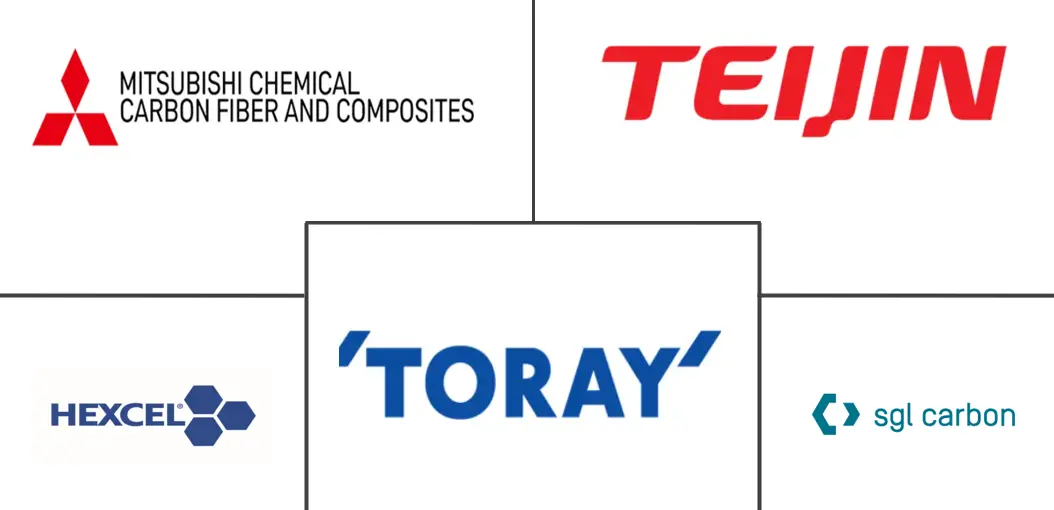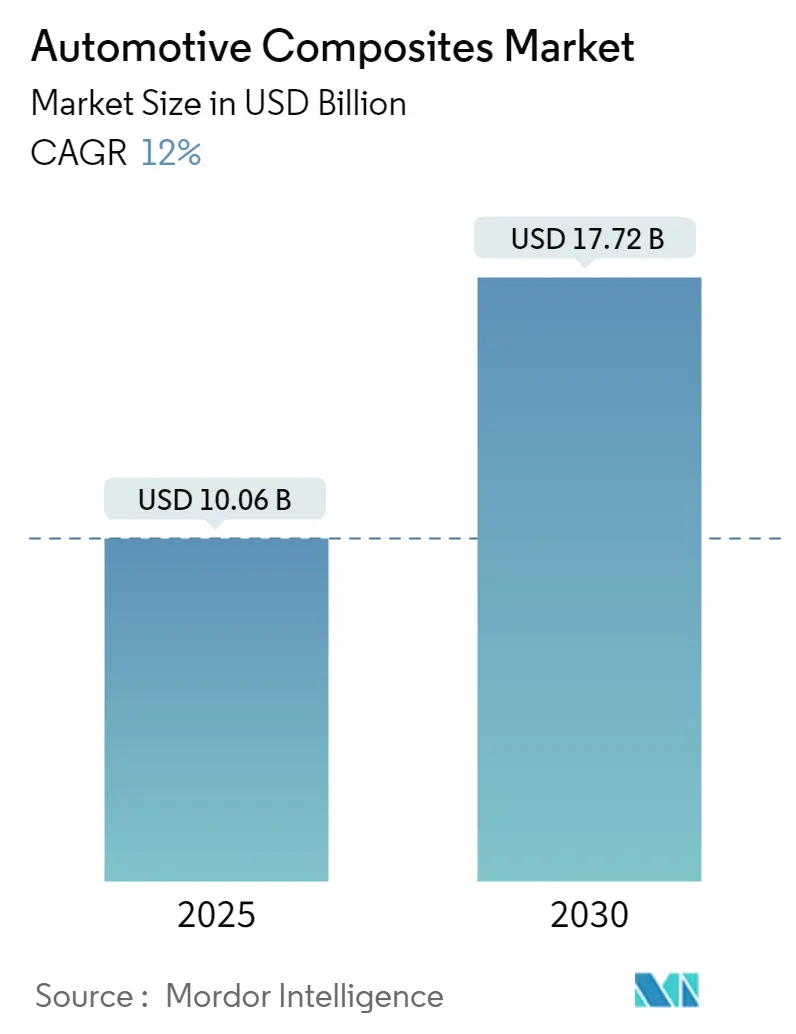
Automotive Composites Market Analysis by Mordor Intelligence
The Automotive Composites Market size is estimated at USD 10.06 billion in 2025, and is expected to reach USD 17.72 billion by 2030, at a CAGR of 12% during the forecast period (2025-2030).
Over the medium term, the automotive industry's rising demand for lightweight materials and increasing focus on fuel efficiency is poised to significantly propel market growth. Yet, the steep costs of carbon fiber and glass fiber composites pose a challenge to this expansion. Integrating these composites into budget-friendly vehicles could lead to a notable price uptick.
Moreover, the limited recyclability of composite materials stands as a significant hurdle for their use in entry-level passenger vehicles. This challenge is intensified by the intricate nature of composite structures, which often comprise diverse components that are hard to separate and process. Still, a notable trend is emerging: original equipment manufacturers (OEMs) are increasingly collaborating with suppliers, driven by several pivotal factors.
As the automotive sector confronts the pressing need to craft fuel-efficient vehicles in line with stringent environmental mandates, the appetite for lightweight materials has surged. This demand is especially pronounced in the swiftly growing lightweight electric vehicle segment, where weight reduction is vital for boosting battery efficiency and overall performance.
Moreover, industry giants like BMW and Nissan are delving into pioneering methods to substitute conventional metal parts with cutting-edge composite fibers. This transition not only meets the demand for lighter vehicle frameworks but also aligns with sustainability objectives by potentially curtailing the carbon footprint of vehicle manufacturing.
Global Automotive Composites Market Trends and Insights
Carbon Fiber Segment Hold Major Growth
Vehicle production is on the rise, and as electronic technologies become more integrated into automotive design, the demand for lightweight components is set to soar. This shift not only mirrors advancements in manufacturing techniques but also underscores a growing consumer preference for fuel-efficient and sustainable transportation.
As manufacturers aim to boost vehicle performance and efficiency, there's a pronounced focus on weight optimization, all while ensuring safety and functionality remain intact. This emphasis resonates with consumers, who often view lightweight vehicles as more agile, economical, and eco-friendly. These dynamics are pivotal in driving the market for lightweight automotive components in the foreseeable future.
Utilizing carbon fiber in vehicle production not only bolsters durability but also prolongs the vehicle's life cycle. Moreover, composite materials used in exterior parts offer superior stiffness and play a crucial role in safeguarding occupants during accidents.
Recent years have witnessed the automotive industry undergoing transformative advancements, largely spurred by emerging technologies. A standout trend is the heightened adoption of lightweight materials in crafting auto components. This pivot is vital, enhancing vehicle performance while simultaneously boosting fuel efficiency and curbing emissions.
In an average automobile, fiber-based materials constitute about 50% of the total volume. Notably, a mere 10% increase in these lightweight materials adds only a slight weight increment. This equilibrium is essential, enabling manufacturers to bolster component durability and strength without hindering vehicle performance. As these advancements progress, the industry is poised for even more refined applications of lightweight materials, heralding the next generation of vehicles.
Stricter emission standards are fueling a surge in electric vehicle demand, leading to a heightened reliance on lightweight composite materials. In response, many composite part manufacturers are pivoting towards mass-producing natural fiber composites. Harnessing fibers from flax, these composites can be compression-molded into automotive interior panels, achieving a remarkable 70% reduction in plastic usage and a 50% weight decrease compared to conventional composites.
As developing economies rapidly embrace the demand for lightweight vehicles, the carbon fiber composites market is poised for swift expansion in the coming years.
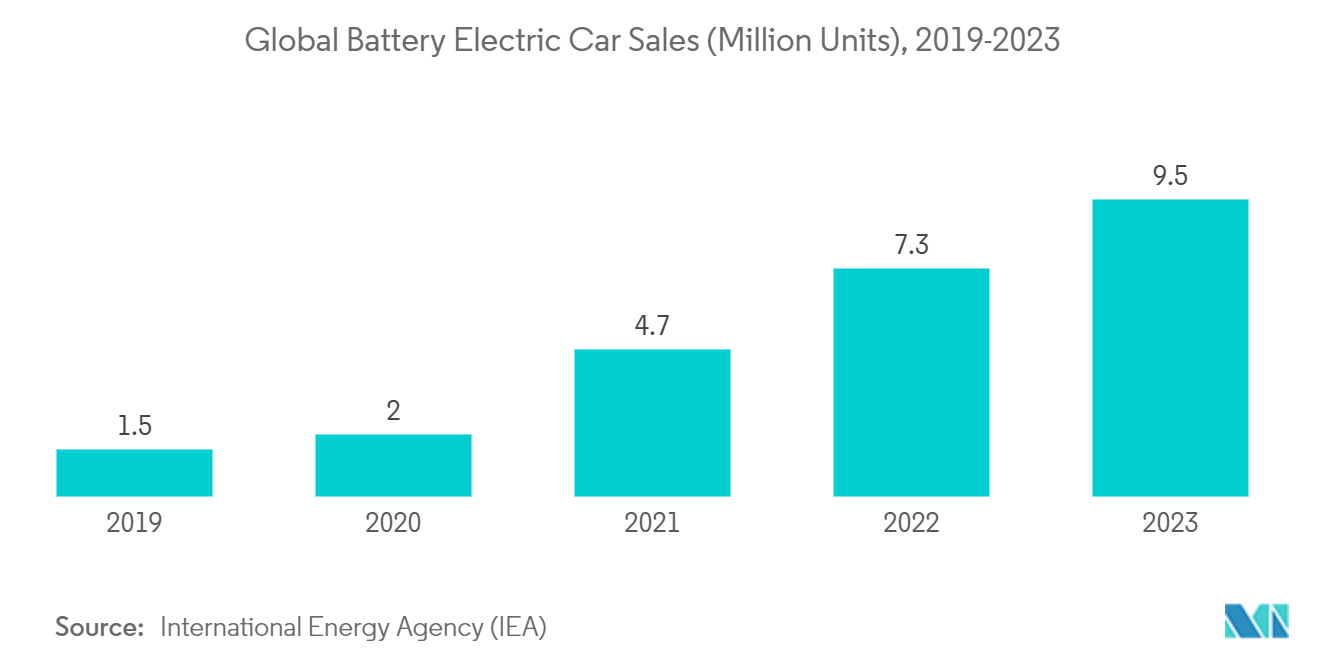
Asia-Pacific leading the Automotive Composite Market
Asia-Pacific stands at the forefront of the automotive composites market, closely trailed by Europe and North America. This dominance is primarily fueled by the surging demand for lightweight materials, a cornerstone of contemporary automotive design.
In Asia-Pacific, the automotive sector is booming, driven by technological advancements in manufacturing and a growing consumer appetite for fuel-efficient vehicles. Coupled with this, stringent emission regulations are pushing manufacturers to explore innovative composite materials. These materials not only lighten vehicle weight but also bolster performance and sustainability. Consequently, the global automotive industry is placing heightened importance on integrating these lightweight composites into manufacturing processes.
India's automotive sector is witnessing a surge, largely fueled by rising consumer incomes. As more people ascend to the middle class, their enhanced purchasing power is driving up the demand for personal vehicles. This growing demand is further amplified by an increasing recognition of the advantages of car ownership, including convenience and mobility.
Furthermore, there's a notable shift in consumer inclination towards lighter vehicles. This shift is driven by an increased awareness of fuel efficiency and the environmental ramifications of automotive choices. As consumers become more attuned to their carbon footprint, they're gravitating towards vehicles that promise superior mileage and reduced emissions.
In response, manufacturers are channeling efforts into pioneering designs and technologies that align with the demand for lighter, eco-friendlier vehicles. This transformation in the automotive realm underscores a broader dedication to sustainability and efficiency, especially in light of India's swift urbanization and economic expansion.
India ranks as the fifth-largest producer of both light and commercial vehicles and holds the title of the second-largest producer of two-wheelers. Given the nation's rapidly expanding manufacturing capabilities, the appetite for carbon fiber composites is set to rise in the coming years.
There's a burgeoning global appetite for customized automobiles, especially among younger consumers drawn to personalizing their vehicles akin to high-performance sports and racing cars. This isn't merely a passing trend; it underscores a profound yearning for individuality in automotive expression.
In manufacturing, thermoset composites have long been pivotal in crafting racing and luxury sports cars, celebrated for their lightweight and durable nature. As these trends intertwine, they are set to elevate the automotive composites market to new heights, heralding an era of innovation and personalization in the automotive domain.
Recent advancements in the region signal a significant uptick in demand for composite materials in automotive manufacturing. Manufacturers, in their quest for lightweight yet durable materials, are turning to composites to boost fuel efficiency and performance. This trend underscores the industry's dedication to innovation and points to a brighter, more sustainable future in automotive engineering.
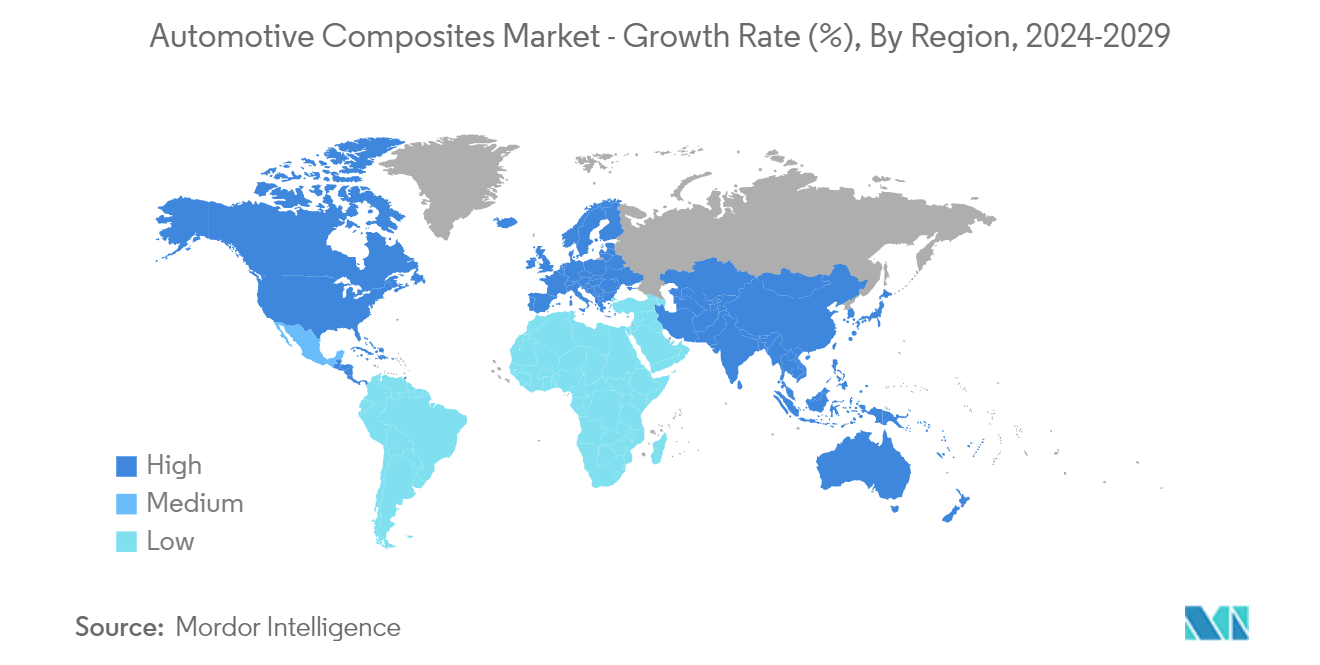
Competitive Landscape
Key players like Teijin Ltd, Toray Industries Inc., Mitsubishi Chemical Carbon Fiber and Composites, Inc., and SGL Carbon lead the Automotive Composites Market. These companies are innovating new composites aimed at significantly reducing vehicle weight. For instance,
- In October 2023, Toray Industries, Inc. unveiled TORAYCA carbon fiber, a lightweight material that bolsters the performance of carbon-fiber-reinforced plastics. This breakthrough not only lightens the load across diverse applications but also curtails environmental impact by championing efficiency. With its standout attributes, TORAYCA is poised to revolutionize sectors such as aerospace and automotive, driving enhancements in fuel efficiency and a reduction in carbon emissions.
- In July 2023, BMW AG allocated USD 224 million in South Africa, enhancing its electric vehicle production facilities to meet the surging global demand for EVs. This move not only amplifies the demand for lightweight manufacturing composite materials but also solidifies BMW's foothold in the local market. Furthermore, the investment bolsters the local economy by generating employment opportunities and championing sustainable innovation.
Automotive Composites Industry Leaders
-
Hexcel Corporation
-
Mitsubishi Chemical Carbon Fiber and Composites, Inc.
-
Toray Industries Inc
-
SGL Carbon SE
-
Teijin Limited
- *Disclaimer: Major Players sorted in no particular order
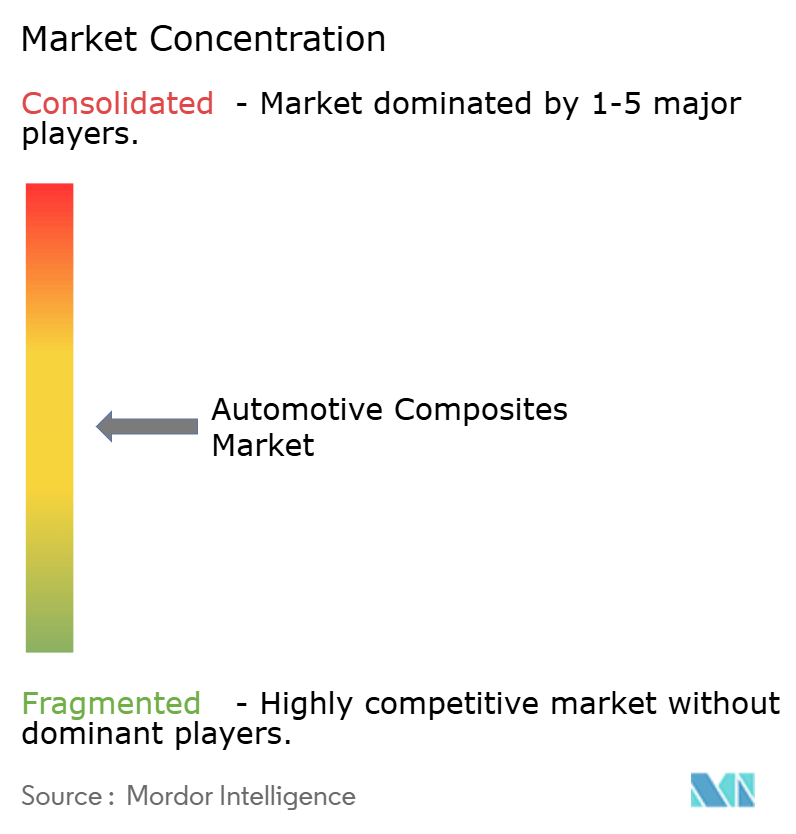
Recent Industry Developments
- June 2024: Teijin Limited unveiled a new production line dedicated to Polycarbonate Resin Panlite sheets and films, bolstering its manufacturing prowess. These materials, pivotal for automotive and electrical/electronic uses, are set to address the surging demand for lightweight, high-performance, and durable products, all while upholding top-notch quality and efficiency.
- January 2024: SGL Carbon SE has teamed up with E-Works Mobility to create a specialized battery case utilizing glass fiber-reinforced plastic. This partnership boosts the durability and performance of battery enclosures, ensuring they are lightweight yet resilient against diverse environmental conditions. This endeavor underscores the company's dedication to both innovation and sustainability within the automotive sector.
Global Automotive Composites Market Report Scope
Composites are playing a pivotal role in the evolution of vehicles, making them lighter, safer, and more fuel-efficient. A composite material is formed by embedding high-performance fibers, like carbon or glass, into a matrix, usually an epoxy polymer. This combination yields properties that surpass those of the individual components.
The automotive composites market is segmented by application type, material type, and geography. By application type, the market is segmented as Structural Assembly, Powertrain Component, Interior, and Exterior. By Material Type, the market is segmented as Thermoset Polymer, Thermoplastic Polymer, Carbon Fiber, And Glass Fiber. By Geography, the market is segmented as North America, Europe, Asia-Pacific, and the Rest of the World. For each segment, the market sizing and forecast have been done based on the value (USD).
| Structural Assembly |
| Powertrain Component |
| Interior |
| Exterior |
| Others |
| Thermoset Polymer |
| Thermoplastic Polymer |
| Carbon Fiber |
| Glass Fiber |
| North America | United States |
| Canada | |
| Rest of North America | |
| Europe | Germany |
| United Kingdom | |
| France | |
| Italy | |
| Rest of Europe | |
| Asia-Pacific | China |
| Japan | |
| India | |
| South Korea | |
| Rest of Asia-Pacific | |
| Rest of the World | South America |
| Middle-East and Africa |
| By Application Type | Structural Assembly | |
| Powertrain Component | ||
| Interior | ||
| Exterior | ||
| Others | ||
| By Material Type | Thermoset Polymer | |
| Thermoplastic Polymer | ||
| Carbon Fiber | ||
| Glass Fiber | ||
| By Geography | North America | United States |
| Canada | ||
| Rest of North America | ||
| Europe | Germany | |
| United Kingdom | ||
| France | ||
| Italy | ||
| Rest of Europe | ||
| Asia-Pacific | China | |
| Japan | ||
| India | ||
| South Korea | ||
| Rest of Asia-Pacific | ||
| Rest of the World | South America | |
| Middle-East and Africa | ||
Key Questions Answered in the Report
How big is the Automotive Composites Market?
The Automotive Composites Market size is expected to reach USD 10.06 billion in 2025 and grow at a CAGR of 12% to reach USD 17.72 billion by 2030.
What is the current Automotive Composites Market size?
In 2025, the Automotive Composites Market size is expected to reach USD 10.06 billion.
Who are the key players in Automotive Composites Market?
Hexcel Corporation, Mitsubishi Chemical Carbon Fiber and Composites, Inc., Toray Industries Inc, SGL Carbon SE and Teijin Limited are the major companies operating in the Automotive Composites Market.
Which is the fastest growing region in Automotive Composites Market?
Asia Pacific is estimated to grow at the highest CAGR over the forecast period (2025-2030).
Which region has the biggest share in Automotive Composites Market?
In 2025, the Asia Pacific accounts for the largest market share in Automotive Composites Market.
What years does this Automotive Composites Market cover, and what was the market size in 2024?
In 2024, the Automotive Composites Market size was estimated at USD 8.85 billion. The report covers the Automotive Composites Market historical market size for years: 2019, 2020, 2021, 2022, 2023 and 2024. The report also forecasts the Automotive Composites Market size for years: 2025, 2026, 2027, 2028, 2029 and 2030.
Page last updated on:
Automotive Composites Market Report
Statistics for the 2025 Automotive Composites market share, size and revenue growth rate, created by Mordor Intelligence™ Industry Reports. Automotive Composites analysis includes a market forecast outlook for 2025 to 2030 and historical overview. Get a sample of this industry analysis as a free report PDF download.
